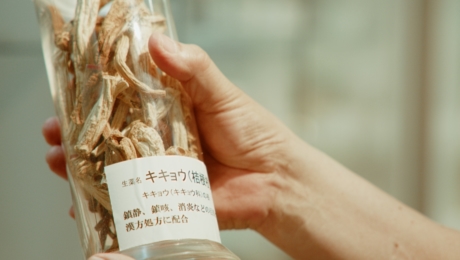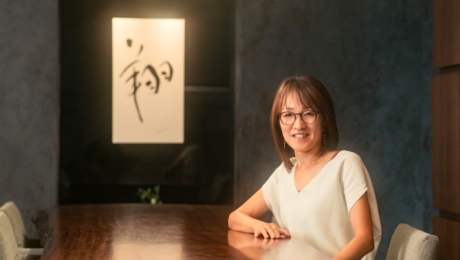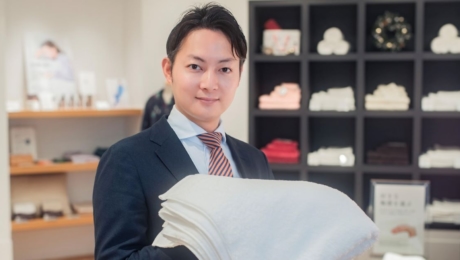![[Tokyo Metropolitan Medicinal Botanical Garden] Finding Purpose in a 365-Day Natural Wonderland](https://en.edotokyokirari.jp/wp-content/uploads/20241022134037/6eba19cf6a35c4389427724909c1e3ca.jpg)
![[Tokyo Metropolitan Medicinal Botanical Garden] Finding Purpose in a 365-Day Natural Wonderland](https://en.edotokyokirari.jp/wp-content/uploads/20241022134010/6c28963882e9d5b40a69cf1d2ba5a401-750x750.jpg)
[Tokyo Metropolitan Medicinal Botanical Garden] Finding Purpose in a 365-Day Natural Wonderland
2024.11.13
LIFEJust steps from Higashi-Yamatoshi Station on the Seibu Haijima Line lies the Tokyo Metropolitan Medicinal Botanical Garden, a historical site opened in 1946 with the aim of collecting and cultivating plants used in medicine, as well as promoting accurate knowledge about them. The garden is home to approximately 1,600 species, including poppies and hemp. Since 2007, the Tokyo Crude Drugs Association, a public-interest organization focused on the promotion ofshoyaku(crude drugs), has been responsible for its management.
Tsutomu Yamagami, who serves as the park manager, has been working at the garden for 10 years. In addition to overseeing the cultivation and maintenance of plants, his duties include labor management of staff and planning and organizing various events. Although his commute takes an hour and a half each way by train—three hours every day—he says, “It’s no bother in the slightest.”
![[Tokyo Metropolitan Medicinal Botanical Garden] Finding Purpose in a 365-Day Natural Wonderland](https://en.edotokyokirari.jp/wp-content/uploads/20241022134024/1984f8d66072c02c2ced2258b284ba11.jpg)
Yamagami has loved plants since childhood, a love stemming from his mother’s passion for flowers and the many plants she grew. After graduating from university, he joined a pharmaceutical company as a sales representative, where he first learned aboutkampo(traditional Japanese medicine), which the company specialized in. That’s when he encountered crude drugs, made from parts of plants believed to have medicinal effects, such as leaves and roots. Until then, Yamagami had only enjoyed plants for their beauty, but with this an entirely new aspect of plants was revealed to him.
“These days, even medical schools teachkampo, but back then, it wasn’t well-known. As salespeople, we had to study crude drugs andkampoto explain them to doctors, and I learned that a great many familiar flowers are actually used in crude drugs. Just like that, my love for plants and crude drugs started connecting like threads.”
When Yamagami reached retirement age, he decided to work at the medicinal botanical garden as park manager, fulfilling his long-held dream to work surrounded by plants. Now, 10 years later, Yamagami reflects, “I feel like my life up to this point has simply been a warm-up for working here.”
![[Tokyo Metropolitan Medicinal Botanical Garden] Finding Purpose in a 365-Day Natural Wonderland](https://en.edotokyokirari.jp/wp-content/uploads/20241022134029/c0687ad1d3daf1ee94e0c9ba1cbe429b.jpg)
Though Yamagami now lectures on crude drugs and guides pharmacists, he admits that before coming to the garden, “I didn’t know a great deal about the plants used as crude materials.” Even now, at over 70 years of age, he finds himself learning every day. And although to cultivate plants is to be at the mercy of nature, often bringing numerous challenges, Yamagami says that this in itself can be a source of joy.
One of the aspects of medicinal plants that Yamagami finds most fascinating is how different parts of the plant come to be used as medicinal ingredients. For example, some plants might be used for their roots or seeds, while others contain medicinal properties in small, hooked parts of the vine. Some plants can even be used in their entirety, from root to flower, as a single natural medicine.
In addition to conducting surveys and inspections related to illegal drugs and health foods as part of the regulatory responsibilities of the Tokyo Metropolitan Medicinal Botanical Garden, Yamagami also highlights the garden’s role as a place of relaxation for local residents. Indeed, even on weekdays, a number of visitors can be seen strolling through the garden, taking photos of flowers, or sitting on benches and passing the time in casual conversation.
![[Tokyo Metropolitan Medicinal Botanical Garden] Finding Purpose in a 365-Day Natural Wonderland](https://en.edotokyokirari.jp/wp-content/uploads/20241022134033/cc46fe96294dfdbde7f3ac6c8fc710ad.jpg)
“I believe a botanical garden is a 365-day wonderland. Not only do the flowers change with the seasons, but plants also respond to yearly climate changes, such as extreme heat or mild winters. Most people come for the flowers, but even after the flowers are gone, there are still plenty of wonderful plants to see. Every visit offers a new discovery, a chance to observe the life cycle of plants—that’s what a botanical garden is all about.”
Spanning more than 30,000 square meters, the garden also preserves natural woodland reminiscent of the old Musashino landscape. In addition to various events held each month, there are also displays designed to educate visitors interested in herbs and medicinal plants. Yamagami’s hope is that visiting this garden and connecting with the flowers and trees will inspire people to appreciate and preserve nature for future generations.






